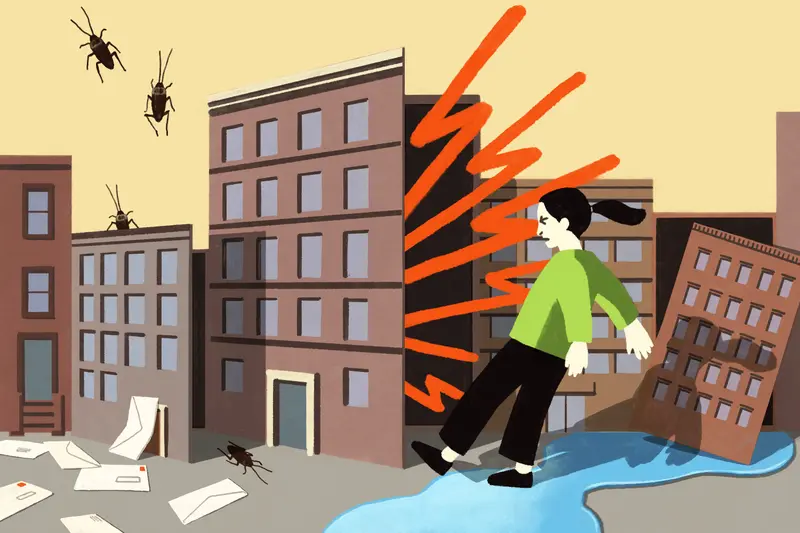Apartment hunting in New York City is a special kind of hell. Friends warned me before I moved here five years ago, sharing stories of cockroaches and sketchy real estate brokers, of paying $2,000 per month to live next to an early morning parade of garbage trucks. So when I landed my first apartment — with hardwood floors, a short commute and an in-unit washer/dryer for less than $1,850 a month — I thought I’d found a unicorn.
The unicorn turned out to be a pile of rotting meat in a trenchcoat. First my ceiling became waterlogged from my neighbor’s leaking radiator (while she was recovering from surgery). Then my radiator soaked the apartment of my downstairs neighbor (who was paying $3,000 a month even though there was no heat in her toddler’s bedroom). A feud between our landlord and the local post office ensured all of our mail was dumped onto the basement stairs, where it got stolen or buried under snow. When I could no longer use my radiator for fear of leaking water everywhere, the landlord suggested I deal with a historic cold snap by installing “extra thick curtains.” Once the weather warmed, a building down the block started hosting parties so loud they made my floorboards tremble until two in the morning.
I was determined to use some of my investigative reporting skills to find a better place to live. I set up spreadsheets, browsed government databases and questioned prospective buildings the way I would a reluctant source. It worked: My next two apartments were a huge improvement.
Of course, I was lucky: I’ve never faced a bidding war; I can work from home, so I choose to live farther from Manhattan, where rents are cheaper; I am able-bodied and college-educated and have the resources to avoid the worst landlords. Lower-income tenants and people with disabilities face far greater obstacles. Quartz recently reported that because landlords prefer tenants whose annual salary is 40 times the monthly rent, residents in Manhattan would need a household salary of $160,000 to afford the median rent for a vacant one-bedroom apartment. That’s more than twice the city’s median household income of $67,000 from 2016 to 2020. (Average rent for vacant Manhattan apartments reached $5,000 in June for the first time ever.)
With low vacancy rates, “landlords are in the enviable position of taking a pretty terrible apartment, charging a lot of money for it and when someone comes in basically telling them, ‘Take it or leave it,’” said Ellen Davidson, a staff attorney at the Legal Aid Society, which represents low-income New Yorkers in housing court and other legal matters.
No amount of due diligence can solve the affordability crisis. But I hope these backgrounding tips can help you screen out some obvious bad actors. This guide is divided into three sections; the first two will help renters do their due diligence. Part three is a primer on tenant rights. I’ve also included anecdotes from ProPublica colleagues who shared their own renter horror stories.
Finally, these tips are far from comprehensive and biased toward my own priorities: I’m obsessed with flood risk (an occupational hazard of being an environment reporter), and as a pathetically light sleeper, I care a lot about ambient noise. (For additional coverage of New York housing policy and real estate, I recommend THE CITY, Gothamist, Curbed and Brick Underground.)
How to Research a Building and Landlord
Here’s a list from Curbed on where to search for apartments. I’ve also had luck with NYBits, where you can easily filter for no-fee apartments.
Once you’ve found an apartment you like:
Start with Who Owns What. Type in the building’s address to see the property owner, a summary of recent tenant complaints and other buildings owned by the landlord (or related entities). In my searches, I sometimes saw apartments in the same neighborhood with similar amenities and prices but vastly different histories of complaints. Who Owns What is an easy way to weed out specific buildings and owners from consideration.
The site was built by JustFix, a nonprofit that builds tools for tenant organizers. Check out their user’s guide and methodology.
Landlords often create LLCs that make it hard to identify a building’s owner, said Sam Rabiyah, data lead and engineer at JustFix, which pulls public registration files to map out the people behind these entities. Rabiyah said the tool was originally intended for housing advocates, but its audience has grown to include apartment hunters, journalists and city officials.

Once you’ve selected a specific building, click on the “Timeline” tab for more details. The “Display” drop-down menu defaults to show 311 complaints tenants have filed with the city’s Department of Housing Preservation and Development. These complaints often involve pests, plumbing problems, or heat and hot water issues. You can also choose “DOB/ECB violations” in the drop-down to view buildingwide violations such as broken elevators or illegal construction.
To view the specifics of each complaint, click on “ANHD DAP Portal” at the bottom right. That will take you to another online tool from housing advocates, funded by city and state legislators, that shows a wealth of information about the property. You’ll be able to view individual complaint descriptions, along with building eviction stats and permit applications.
At this point you’ll have to gauge the seriousness of the complaints. If you’re a parent, complaints about lead paint or missing window guards could be major red flags. Rabiyah said it’s helpful to focus on the most common complaints: Those that involve pests or heat and hot water are hazardous and “very intensely disruptive to someone’s home,” he said.
I also recommend the “Summary” tab, which shows statistics for all the buildings owned by the same entity. The section on “Maintenance code violations” shows the rate of open violations across these properties compared to the city average. A lower rate could indicate a landlord who’s more attentive to building repairs. Rabiyah warned that the rate skews low for larger landlords, since they own so many units. He said this figure is more reliable when it comes to smaller landlords.
A caveat: Public housing isn’t subject to the same data disclosure policies as private landlords, so Who Owns What has limited insight into living conditions there. These buildings are owned and managed by the New York City Housing Authority. When you enter one of these addresses into the tool, it provides info on regulators and how to submit complaints.

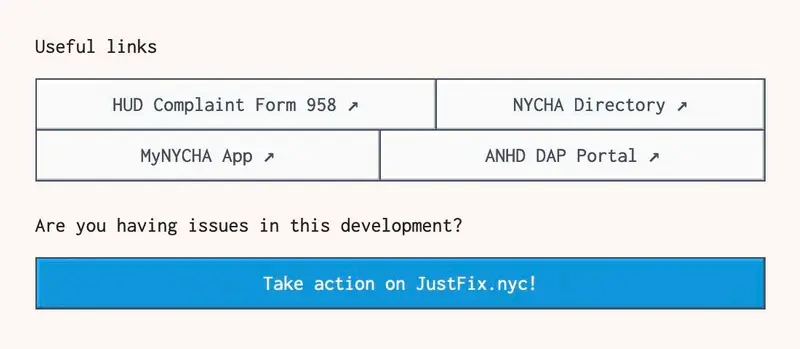
Remember, not all tenants feel comfortable filing complaints with the city, so there may be problems that never show up in official records.
“People don’t want to call 311,” said Larry Wood, director of advocacy and organizing at Goddard Riverside, a community-based nonprofit that offers a range of services including child care and a legal clinic. “Most tenants don’t want to rock the boat.”
Other issues may be seasonal or take a while to emerge.

Sophie Chou, a ProPublica data reporter, spent months in an apartment that had raccoons living in the ceiling. At first it wasn’t a problem, she said, but over time the noise became unbearable. “Every evening it would literally sound like our roof was being demolished by rabid gremlins. It got so bad I didn’t want to sleep in my room anymore.” The landlord’s attempts to remove the raccoons didn’t work, Chou said, not even cutting holes in the ceiling and spraying raccoon repellant. Luckily, her roommate convinced the landlord to let them move out before the end of their lease.
Don’t forget to Google: Once you’ve identified the building’s owner, it’s worth typing their names into the search engine of your choice. You might find Yelp reviews for the management company or tenant reviews.
Keep an eye on the Landlord Watchlist, compiled by the city’s Office of the Public Advocate. The list scores multifamily rental buildings using data on open violations recorded by the city. The site also has a guide to tenants’ rights.
Learn about flood risk: The intense flooding from Hurricane Ida last fall led to horrific deaths and flooding throughout the city. I use the Risk Factor site, created by the nonprofit First Street Foundation, to screen for flood risk at individual buildings. (I wrote about the first version of the tool in 2020; it has since been updated with wildfire risk.) Enter your address to get the projected current and future flood risk at that location.
The Bedbug Registry: this site includes crowdsourced reports of bedbugs at specific addresses and hotels around the country.
Noise complaints: I’m eternally jealous of people who can sleep through anything. If street noise bothers you, check out the 311 noise complaints portal. Type in the building address and select “Noise” under “Problem Area.” Try searching for both summer and winter complaints; some areas get a lot louder in warm weather.
If you’re looking at apartments near hospitals, it’s worth checking whether you’ll hear a lot of sirens at night. I’ve found Reddit threads about neighborhoods with loud ambulances.
Noisy radiators are a true New York tradition. The heaters in my first apartment clanked all night long like an army of tiny elves were banging away with hammers. My landlord only offered Band-Aid fixes that did nothing to stop the noise. I even recorded the sounds to keep a document of my complaints. A good super might be able to fix the problem, but it could require more extensive repairs than the landlord is willing to make. While searching for my current apartment, I prioritized buildings with baseboard heaters, which are much quieter.
What to Do When You View the Apartment
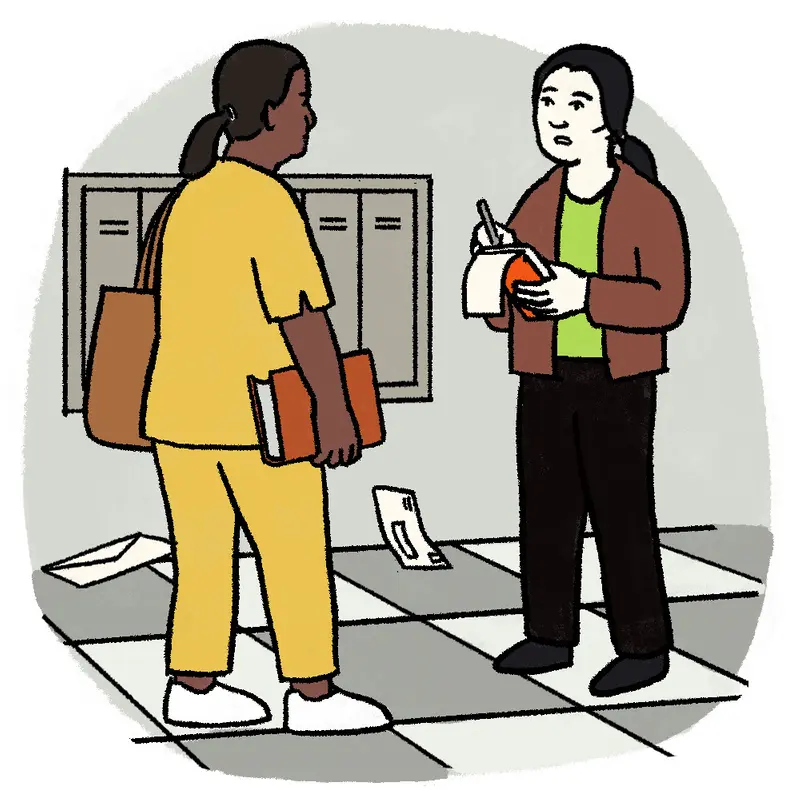
Talk to other tenants: In a city where many people dread small talk with strangers, it may feel awkward to lurk on the sidewalk until you spot a likely resident. But hearing directly from tenants is your most reliable source of intel. Arrive 20 minutes early for a viewing and talk to people you see in the lobby or walking in and out of the building. Ask them what it’s like to live there: How’s the landlord? Does the management company respond quickly to maintenance requests? Do residents’ packages get stolen? I chose my current place partly because the prior tenants told me they’d lived there for three years and were only moving because their kid needed their own room.
Bring all your documents: If you like the apartment, you’ll want to apply right away. The landlord or broker will ask for various documents, which may include:
a copy of your most recent W-2
a snapshot of your bank account
your two most recent pay stubs
a letter from your employer confirming your salary
a copy of your driver’s license or other ID
contact info for references
I always bring paper copies and store electronic versions on my phone. To secure the apartment, you may have to pay a security deposit, one month's rent and a broker's fee (if you used a broker). Many apartments also require application fees that you’ll need to pay with cash, a cashier’s check or money order.
If you can afford it: Once you move in, get renter’s insurance. I started buying it years ago after a friend’s apartment burned down, and it costs me $200 to $400 a year. My landlord also requires insurance as a condition of the lease.
Your Rights as a Renter
Nothing is foolproof. You can do all the research in the world and still end up with a dysfunctional building. Even luxury apartments aren’t immune.
All tenants have certain rights: You have the right to live in safe, pest-free conditions, with basic amenities such as heat, hot water and electricity. The city’s ABCs of Housing report includes helpful references.
Renters have the right to organize a tenants’ association, Wood said, and to use the building’s public spaces for their meetings. And, once you’ve lived somewhere for at least 30 days, the landlord cannot simply lock you out; a tenant is entitled to due process in housing court. This rule even applies to alleged squatters or other residents who can document as least 30 days’ occupancy, Wood said.
Some tenants have more rights: Anyone living in rent-regulated units, whether rent-controlled or rent-stabilized, has additional protections, including limits on rent increases. (For rent-stabilized apartments, the cap is set annually by the Rent Guidelines Board, whose members are appointed by the mayor; you can find the latest cap here.)
In an unregulated or “market-rate” apartment, the landlord can kick you out at the end of your lease for any reason at all, said Davidson, the Legal Aid attorney. The fear of being forced to relocate can lead tenants to avoid complaining about needed repairs, she said. Tenants in rent-regulated apartments, by comparison, have “much more power to be able to stand up for your rights.” Landlords can only terminate their leases if they have a good reason, such as showing that the tenant has been a nuisance or has violated the lease.
Some landlords will overcharge tenants by falsely declaring a rent-regulated apartment as market-rate. To fact check your landlord, here are two tools that let you request a unit’s rent history, which will show whether it’s really rent-regulated. (This information is only available to the current tenant, so you can’t use it to screen potential apartments.) Here are some general guidelines on rent stabilization and how to tell if a building contains at least one rent-stabilized unit.
Finally, if you moved into a building while the landlord was receiving a J-51 property tax abatement, then every unit in that building is rent-stabilized for at least the duration of that tax break (often lasting more than 20 years). The building and apartment may lose rent stabilization status only if the landlord follows correct procedures, Wood explained, and the landlord must notify tenants of when that benefit runs out. You can search for J-51 buildings by tax year and learn more about the J-51 program.
If you have a dispute with your landlord, try to resolve it directly with them. Wood said it’s important to build a paper trail in case you decide to take the case to housing court. If your landlord promises in a verbal conversation to fix something, send a follow-up email summarizing what you discussed, he suggested. If problems persist, you can escalate by calling 311. If much-needed repairs are required, for example, you can ask 311 for a housing inspection, which could put pressure on your landlord.
Wood also recommended Housing Court Answers and the Met Council on Housing, which provide advice and advocacy for renters throughout the city. (Wood is president of the board at Housing Court Answers.) Both groups may refer tenants to local community groups that organize collective action in their neighborhoods. Another group, Housing Justice for All, advocates for housing rights throughout New York state. For tenants struggling to recover their security deposits, the New York state attorney general’s office offers a mediation service.
In extreme cases, tenants can go to housing court. They can do that by filing a case against their landlord or withholding rent until the landlord initiates the process for a case, Wood said. Once that happens, tenants can use the paper trail they’ve built up to defend themselves.
But going to court comes with its own risks: Credit companies and tenant-screening apps collect renters’ names from court filings, so tenants can end up on a blacklist that makes it hard to rent again in the future, Davidson said. “There are no great solutions here.”
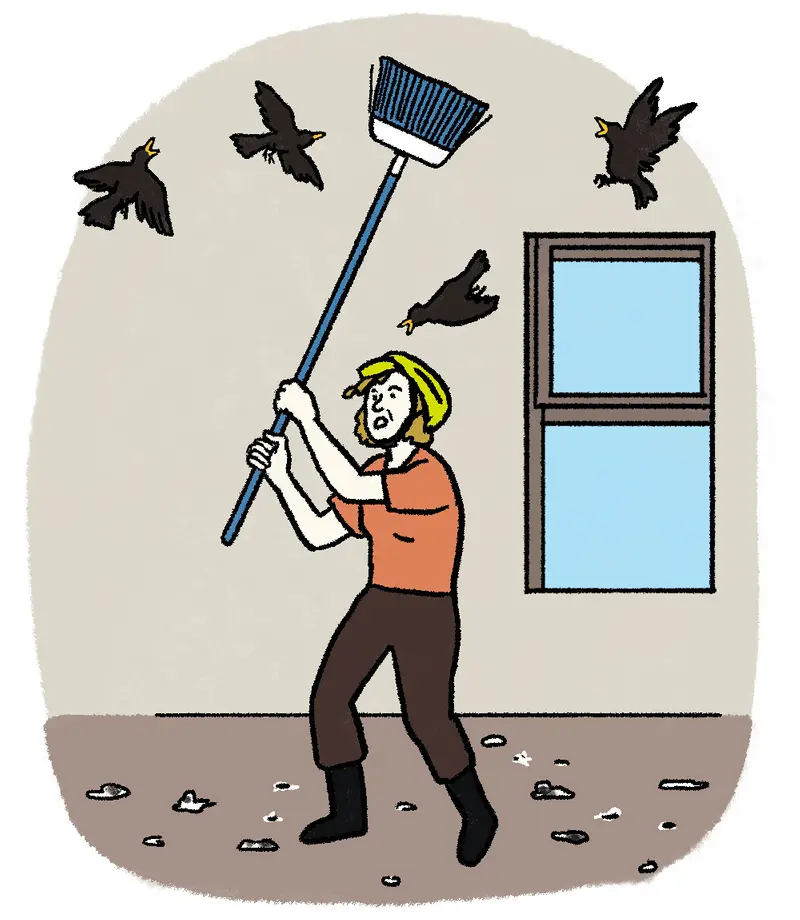
When ProPublica reporter Lizzie Presser struggled with a bird infestation several years ago, she initially considered taking her landlord to housing court. Presser was living on the top floor of a building with exposed wooden beams. She’d loved the apartment until birds squeezed through holes in the ceiling. “Big black birds with yellow beaks” started “circling my bedroom,” Presser explained. “They soiled the whole place with feces. My super was no help. The only way I could figure out how to get them to leave was by putting on a bike helmet, opening my bedroom window, and thrashing a broom against the walls to scare them into looking for cold air.”
But fear of the blacklist convinced Presser not to start a case. She moved out as fast as she could, and found another tenant to take over the lease once management told her they’d patched the roof.
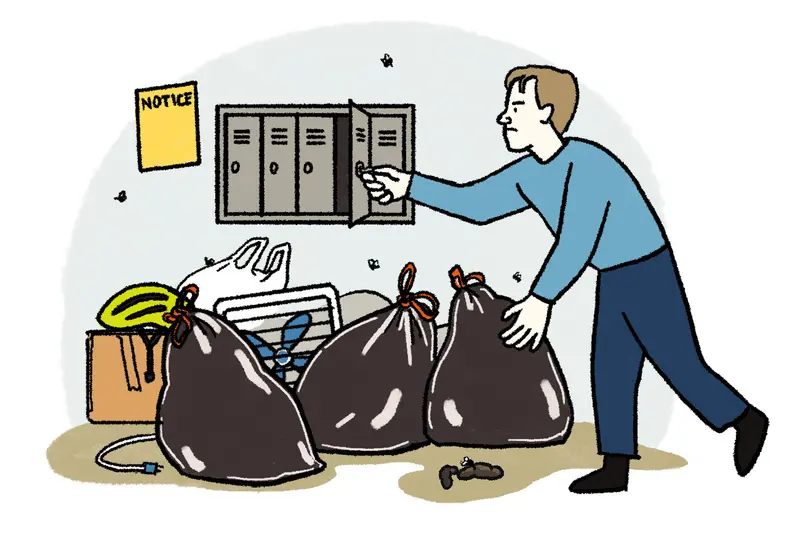
Sometimes you’re stuck: ProPublica’s Lucas Waldron and his partner left California for New York in 2017. A friend of Waldron’s helped them scope out apartments ahead of time. The best option in their price range was one where the apartment was large but the building itself was a bit run-down, Waldron said. By the time they moved in, it had deteriorated considerably: There was a pile of trash in front of the mailboxes, along with human feces. The post office stuck a note on the door stating they would no longer deliver mail until it was cleaned up.
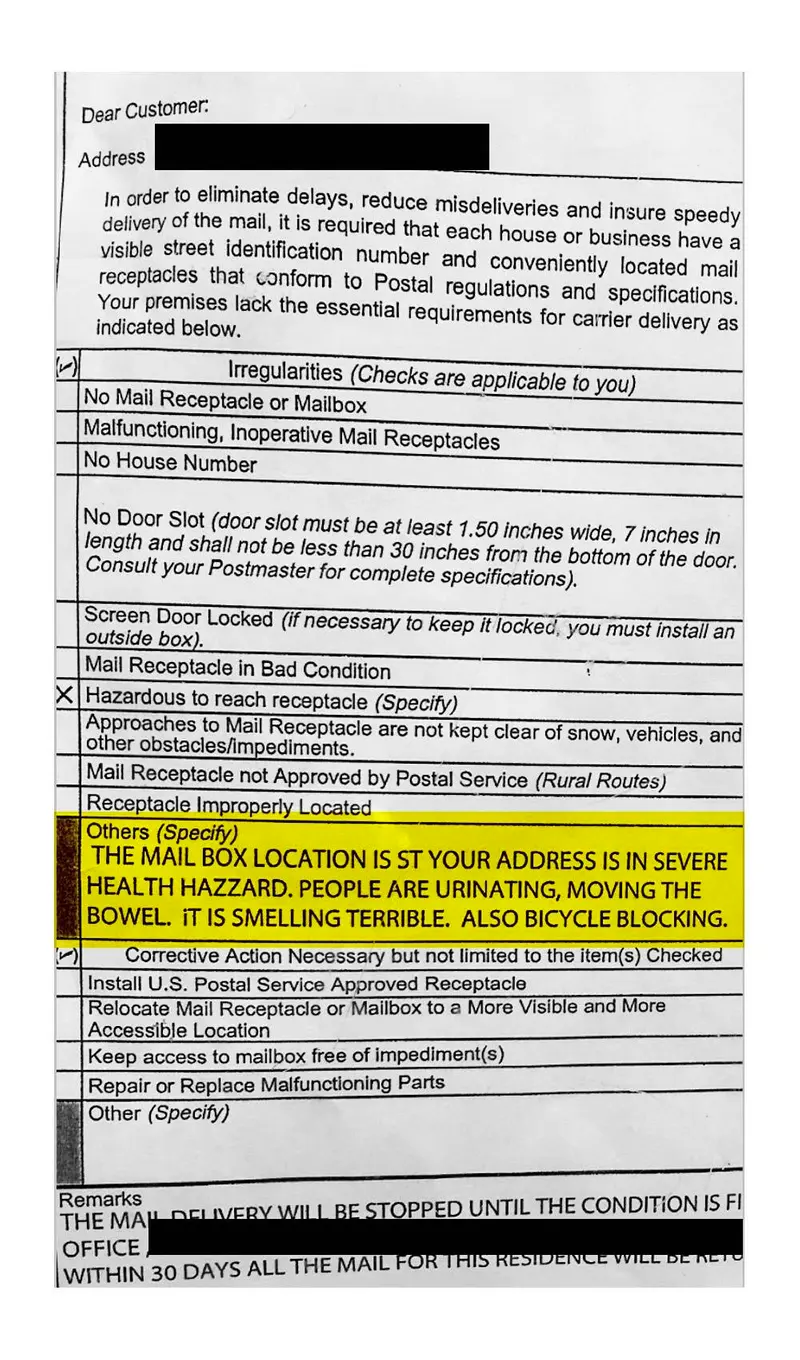
Waldron and his partner asked the management company for help. They sent messages collectively with their neighbors and filed 311 complaints. Nothing worked.
“We couldn’t break the lease,” Waldron said. “We even talked to a lawyer about it,” but they were told, he said, that “you’ve signed the lease, this is a contract, and it would be very difficult and very expensive for you to try to break it.”
The other option — subletting the apartment for the remainder of the lease — felt unethical, Waldron said, so they stayed for a year and left as soon as they could.
Wood said they might have had better luck with a different lawyer. Many private attorneys prefer to represent landlords, he said, and may not always have tenants’ best interest at heart.
Waldron said their next apartment was a huge improvement. His main takeaway from the experience was to “never get an apartment that you haven’t physically gone to yourself. And always vet who the owner is.”
Aug. 16, 2022: This story originally misstated a requirement for securing an apartment. You may have to pay one month’s rent, not first and last month’s rent.
Ruthie Baron, Sophie Chou, Lydia DePillis, Mariam Elba, Bianca Fortis, Lisa Larson-Walker, Brett Murphy, Cezary Podkul, Lizzie Presser and Lucas Waldron contributed tips, anecdotes and references.
